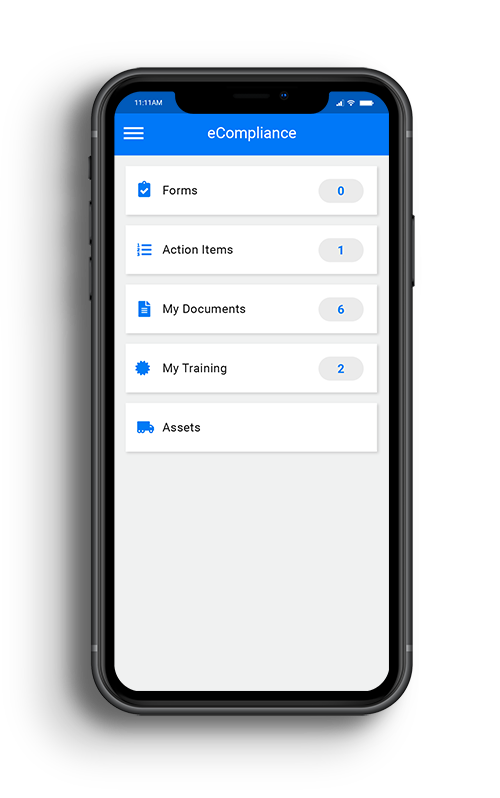
Share this Post
PUBLISHED
September 17, 2021
READ TIME
4 Minutes
WRITTEN BY
![]() Dina Adlouni
Dina Adlouni
Dina is the resident Content Writer at EcoOnline North America . When she’s not writing about health and safety, you’ll find her enjoying a cup of tea while watching her favorite sitcom.
Workplace Safety Terms & Acronyms
Every day, workplace safety terms like “inspections”, “hazard assessments”, and “leading indicators” are used by EHS professionals on the worksite. As safety professionals, it is important to truly understand health and safety terminology and acronyms for safety to have a single source of truth and alignment of jargon throughout the organization. It’s also vital to stay updated on the latest Occupational Safety and Health Administration (OSHA), EHS, and other workplace safety regulations and terms. With a deeper understanding, you will be able to strengthen your safety program and better protect the workforce.
Our team of safety experts at EcoOnline have compiled a list of common workplace health and safety terminology for you to refer to whenever you need.
Let’s dive in!
1. Safety Culture is defined as the thoughts and beliefs your organization and its members have regarding safety.
2. Action Items are tasks that need to be completed to rectify an issue. These are also known as corrective actions.
3. Inspections are examinations of a worksite or piece of equipment to assess whether it is up to compliance and regulatory standards.
4. Hazard Assessments entails the process of identifying all potential risks in addition to defining the controls necessary to mitigate those risks. These are sometimes referred to as risk assessments.
5. Incidents are unplanned events that take place on the worksite which may result in an injury and/or property loss or damage.
6. Leading Indicators are measurable, proactive pieces of information/data to help track trends or patterns to avoid future risks.
7. Toolbox Talks are a type of safety meeting to address specific safety themes on a fixed cadence, whether daily, weekly, bi-weekly or monthly.
8. On-site Hazard Assessments is the process of identifying all potential risks, in addition to defining the controls necessary to mitigate those risks specific to a particular job site.
9. Corrective Actions are tasks completed to help prevent a potential risk or hazard.
10. Employees Trained are the number of employees who have completed the training required to carry out their job task.
11. Non-Conformances with policies or procedures are when certain elements do not meet the policies and procedures outlined by the organization or regulatory body.
12. Safety Meetings are meetings conducted with specific team members which focus on various safety aspects within the organization and how to improve them.
13. Training Compliance Rate is the percentage of employees across the organization who are compliant with their training requirements.
14. Near Miss Reports are documents detailing an event that did not lead to injury, property loss, and/or damage.
15. Total Recordable InjuryFrequency (TRIF) is the rate at which workers are injured for every 100 employees’ worth of full-time hours.
16. Lost Time Injury (LTI) are workplace injuries resulting in a worker having to take time off.
17. Days Away Restricted or Transferred (DART) refers to the number of cases where workers have not been able to carry out their job tasks due to a workplace injury.
18. Hazard Identification (or Hazard IDs) is the act of identifying a risk related to a workplace, job task, or machine.
19. Positive Safety Acknowledgments are positive forms of recognition towards team members.
20. Procedures Re-Evaluated are when processes are assessed and improved upon.
21. Root Cause Analysis is when the reason for a particular issue or incident is evaluated to establish its source.
22. Risk Assessments are examinations of all risks which may be present on-site or when completing a certain job task.
23. Inspection Score is the overall final value of a scored inspection.
24. Deficiencies Found per Inspection is a count of the total number of fails per inspection.
25. Completed Inspections are the number of inspections or examinations which have been finished by a team member.
26. Assessments Deemed Unacceptable are examinations which do not meet specific standards.
27. Proactive Safety Opportunities Recorded is the total number of proactive safety activities including number of hazard assessments, inspections completed, etc.
28. Recognition for Safety Behavior is a form of positive reinforcement given to team members who are taking the necessary precautions needed to ensure safety on-site.
29. Repeat Negative Findings on Audits are the number of repeat fails on an assessment.
30. Hazard Observations are the hazards or risks discovered or identified related to a job task or on-site.
31. Ratio of Action Items to Inspections is the number of action items created per inspection.
32. Specific Sites are certain locations where your organization carries out job tasks and activities.
33. Residual Risk Score is the level of risk which remains after certain controls have been taken to mitigate said risk.
34. Non-Conformances on Site/Operations are when site operations do not meet the specific target or standards set by the organization or regulatory body.
35. Corrective/Preventative Actions Relative to Staff Count Created (or completed) is a leading indicator of the number of corrective actions created per number of employees.
The team at EcoOnline wants to help you in any way we can, so make sure to bookmark this page and refer to the glossary of common workplace safety acronyms and terms whenever you need to.
Continue learning and discover how implementing a more proactive safety approach can add value to your organization by downloading the free whitepaper, Introducing Continuous Improvement as a Competitive Advantage today!
Learn How You Can Get EcoOnline North America
Complete this form and one of our safety experts will be in touch.

